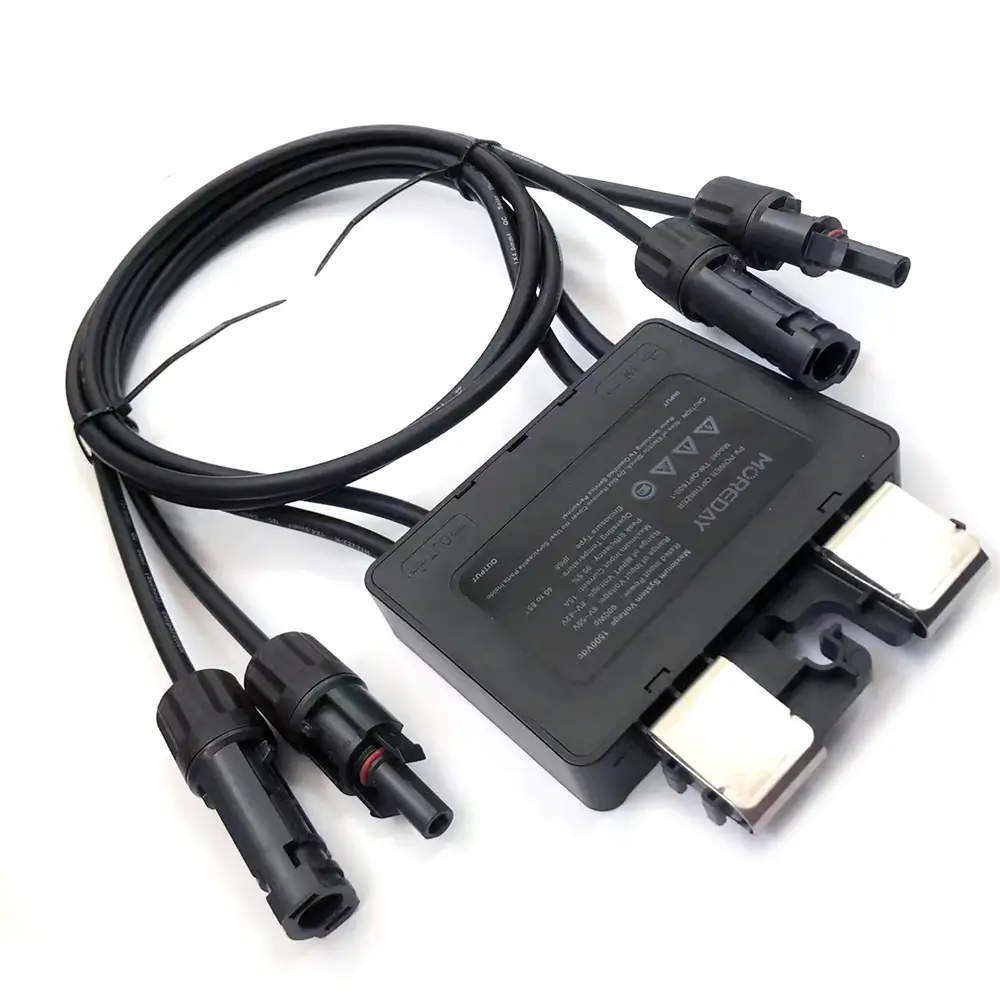As solar technology has evolved, many homes and businesses have begun installing solar photovoltaic systems to meet their energy needs. However, maximizing the efficiency of solar panels has become a key issue. This is where solar power optimizers come into play, independently regulating each panel’s current and voltage to ensure the system performs optimally under various conditions.
Power optimizers not only increase overall power generation but also extend the life of the equipment. This article will introduce what solar power optimizers are, how they work, their benefits, and their importance in photovoltaic systems.
What is a solar power optimizer?

A solar power optimizer is an electronic device installed next to each solar panel or group of solar panels to improve the overall energy efficiency of a photovoltaic system. Unlike traditional inverters and microinverters, power optimizers can adjust the output of each solar panel in real time to ensure the maximum efficiency of the entire system.
How do solar power optimizers work?
The working principle of solar power optimizers is based on the independent management of each solar panel. Traditional photovoltaic systems usually connect multiple solar panels in series to form a string circuit. If one of the panels degrades due to shadows, dust, or other factors, the output of the entire string will be affected. This is like the weakest link in a chain determines the strength of the entire chain.
The solar power optimizer is installed on each solar panel to monitor and adjust the current and voltage of each panel in real-time to ensure that it operates at the optimal power point (Maximum Power Point, MPP). In this way, even if some panels are shaded or polluted, other panels can still operate at maximum efficiency without being affected.
Specifically, the power optimizer optimizes the current and voltage of each panel before the direct current (DC) output by the panel enters the inverter to ensure that each panel outputs at its maximum power. This process is called Maximum Power Point Tracking (MPPT), which can maximize the overall power generation efficiency of the photovoltaic system.
In this way, the solar power optimizer can effectively solve the efficiency loss problem caused by the poor performance of individual panels in the traditional series system, increase the power generation of the entire solar system, and improve the reliability and economy of the system.
Advantages of solar power optimizers

Solar power optimizers are widely used in homes and businesses, and they have several significant advantages in photovoltaic systems:
1. Improve power generation efficiency
The power optimizer optimizes the output of each solar panel independently through maximum power point tracking (MPPT) technology. Even if some panels are affected by shadows, dust, or other factors, the performance of other panels can still operate at the best state, thereby improving the power generation efficiency of the entire system.
2. Reduce system losses
In traditional series systems, the performance of one panel will affect the output of the entire string. The power optimizer can ensure that each panel operates independently, reducing energy losses caused by panel failure or poor performance, and maximizing the energy of each panel.
3. Enhance system flexibility
The power optimizer allows the use of different types and powers of solar panels in the system, making the system design more flexible. Whether it is different manufacturers, different models, or even different aging levels of panels, they can work efficiently in the same system.
4. Extend equipment life
By reducing the mismatch and stress between panels, the power optimizer can reduce the wear of the panels and extend the service life of system components. This also means that the maintenance requirements and costs of the entire system will be reduced.
5. Improved safety
Many power optimizers are equipped with safety features, such as automatically reducing system voltage in an emergency to reduce the risk of electric shock. This provides additional safety for system maintenance and emergency handling.
6. Real-time monitoring and fault diagnosis
Most power optimizers are equipped with monitoring functions that can monitor the performance of each panel in real-time. Once a problem occurs on a panel, the system can detect and notify maintenance personnel in time, facilitating rapid diagnosis and resolution of the fault.
Solar power optimizers have become a key component in improving the performance and reliability of solar photovoltaic systems, making solar power generation more efficient, economical, and safe.
Application scenarios of solar power optimizers

Solar power optimizers are widely used in various photovoltaic systems, including residential and commercial solar systems. Power optimizers are particularly suitable for scenarios with complex installation environments, irregular roof shapes, and uneven lighting conditions.
It can maximize the output of each solar panel and ensure the efficient operation of the entire system even in different orientations and inclinations. In addition, solar power optimizers are compatible with different types of inverters and are suitable for various solar system designs.
Comparison of solar power optimizers and microinverters
Although solar power optimizers and microinverters have similar functions, they have significant differences in their working principles and application scenarios. Power optimizers focus on optimizing DC voltage and work with centralized inverters, while microinverters directly convert DC to AC and perform independent maximum power point tracking on each solar panel.
The advantage of power optimizers is that they are relatively low-cost and can flexibly adapt to complex installation environments. The advantage of microinverters is that they can simplify system design and provide independent power output for each solar panel.
When choosing to use power optimizers or microinverters, users need to make comprehensive considerations based on system size, installation environment, budget, and other factors.
Market trends and future outlook of solar power optimizers
With the continuous development of the solar energy industry, the market demand for solar power optimizers is also growing steadily. More and more manufacturers are beginning to develop smarter and more efficient power optimizers to meet market demand. In the future, power optimizer technology may further integrate with Internet of Things (IoT) technology to provide smarter energy management solutions.
From the perspective of market prospects, with the implementation of global renewable energy policies and the advancement of solar energy technology, solar power optimizers will usher in a broader development space in the next few years.
Conclusion
Solar power optimizer is a key component in solar photovoltaic systems. It improves the overall energy efficiency of the system by optimizing the output of each solar panel in real time and provides users with higher energy yield and better safety protection.
With the growth of market demand and the advancement of technology, solar power optimizers will become more and more important in the future development of solar technology.
MOREDAY solar power optimizer uses advanced MPPT technology to independently optimize the output of each solar panel, ensuring efficient operation of the system even in shadow or pollution.
It supports remote monitoring, strong compatibility, and easy installation, and can significantly improve the power generation efficiency and safety of the system, making it an ideal choice for photovoltaic systems. Click here to contact us for an accurate quote!
Related reading: How to reset an AC contactor?


